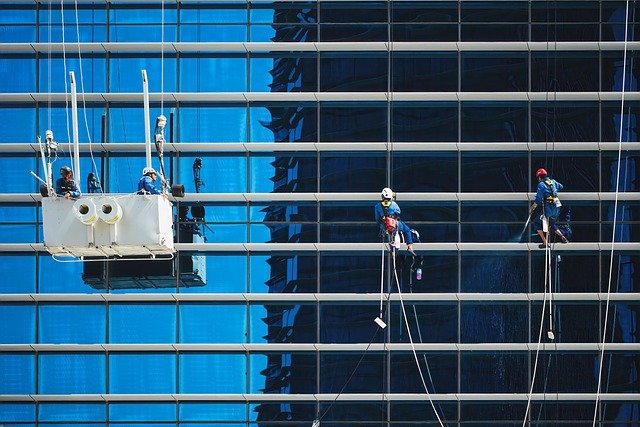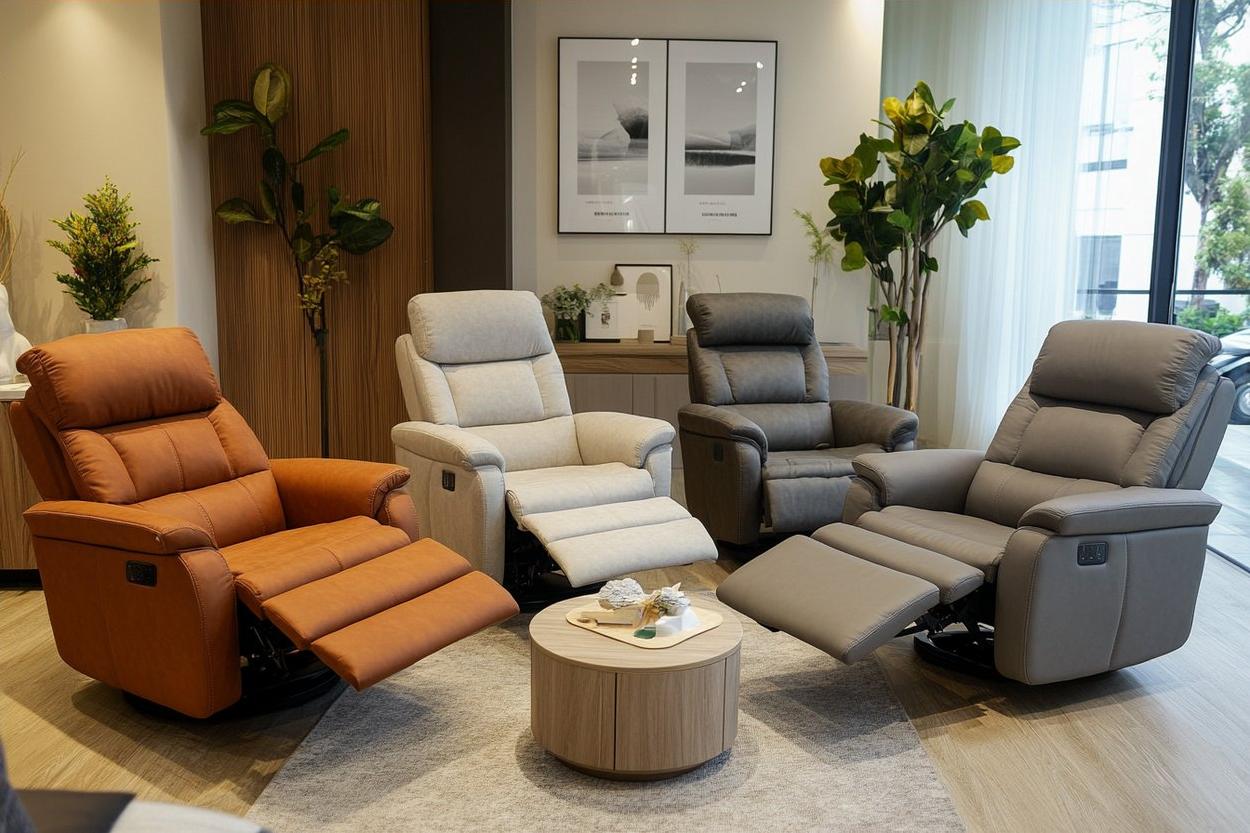The Hidden Tech Changing How Skyscrapers Get Clean: Meet the Window-Cleaning Drone
Skyscrapers define modern city skylines, but keeping their glass facades spotless has long been a dangerous and labor-intensive task. Human workers suspended on platforms hundreds of feet above ground face significant risks daily. Now, emerging drone technology is transforming this industry, offering safer, faster, and potentially more cost-effective solutions. This shift represents not just a technological upgrade, but a fundamental reimagining of how urban maintenance is performed in the 21st century.

For decades, the sight of workers dangling from ropes and scaffolding to clean towering glass buildings has been a common urban image. These professionals face weather challenges, physical strain, and serious safety hazards. Recent technological advances are introducing automated alternatives that could reshape this entire sector. Robotic drones equipped with specialized cleaning systems are now being tested and deployed across major cities worldwide, promising to reduce risk while improving efficiency.
These machines represent a convergence of robotics, artificial intelligence, and specialized cleaning technology. Unlike traditional methods that require extensive setup time and human exposure to dangerous conditions, drones can navigate building exteriors autonomously, applying cleaning solutions and scrubbing surfaces with precision. The technology is still evolving, but early adopters are reporting promising results that could signal a major industry transformation.
How Drones Are Replacing Risky Manual Labor in Modern Cities
Traditional high-rise cleaning involves significant occupational hazards. Workers must contend with wind, extreme temperatures, and the constant risk of equipment failure. According to industry safety reports, falls from height remain among the most serious workplace dangers in building maintenance. Drone technology addresses these concerns by removing human workers from hazardous positions entirely.
Modern cleaning drones use advanced sensors and GPS systems to map building surfaces, identify areas requiring attention, and execute cleaning patterns without direct human control. Some models employ water jets combined with rotating brushes, while others use specialized cleaning pads that adapt to different glass types. The machines can operate in weather conditions that would ground human crews, and they require minimal setup compared to traditional rigging systems.
Several cities have already begun pilot programs. In Singapore, government buildings have tested autonomous cleaning systems that reduced cleaning time by nearly forty percent. Similar trials in Dubai and parts of Europe have demonstrated comparable efficiency gains. While human oversight remains necessary, the role shifts from performing dangerous physical work to monitoring automated systems from safe ground positions.
The Surprising Cost and Efficiency of Automated Window Cleaning
The financial implications of drone-based cleaning systems extend beyond simple equipment costs. Initial investment in robotic technology can be substantial, but operational expenses may decrease significantly over time. Traditional cleaning requires teams of trained professionals, extensive safety equipment, insurance coverage for high-risk work, and substantial setup time for each job.
Automated systems change this equation. While purchasing or leasing drone equipment represents a significant upfront cost, ongoing expenses primarily involve maintenance, software updates, and a smaller crew of technical operators rather than large teams of climbers. Energy consumption for battery-powered drones is relatively modest, and the machines can work longer hours without fatigue or safety concerns that limit human work shifts.
Efficiency improvements come from multiple sources. Drones can begin work immediately without the lengthy rigging process traditional methods require. They maintain consistent cleaning quality without performance variation due to human fatigue. Some systems can operate during off-hours when building occupancy is low, reducing disruption. Early data suggests that buildings cleaned by automated systems may require less frequent maintenance, as the consistent, thorough cleaning prevents buildup that traditional methods sometimes miss.
| Service Provider | Technology Type | Estimated Cost Range | Key Features |
|---|---|---|---|
| Skyline Robotics | Automated platform system | $15,000-$30,000 per building annually | AI-powered navigation, human supervision required |
| Aerones | Tethered drone system | $20,000-$40,000 per building annually | Heavy-duty cleaning capacity, weather resistant |
| Kite Robotics | Autonomous drone fleet | $10,000-$25,000 per building annually | Lightweight design, suitable for medium-rise buildings |
| Traditional Manual Service | Human crew with scaffolding | $8,000-$20,000 per building annually | Established method, widely available |
Prices, rates, or cost estimates mentioned in this article are based on the latest available information but may change over time. Independent research is advised before making financial decisions.
Why Architects and Building Owners Are Turning to Smart Drone Solutions
The adoption of automated cleaning technology reflects broader trends in building management. Modern architectural designs increasingly feature extensive glass surfaces that maximize natural light and create striking visual effects. These designs create maintenance challenges that traditional methods struggle to address efficiently. Drone systems offer solutions specifically suited to contemporary building needs.
Building owners face multiple pressures driving technology adoption. Insurance costs for high-risk manual cleaning continue rising. Labor shortages in some markets make recruiting qualified workers difficult. Sustainability goals push managers toward solutions with lower environmental impact, and electric drones produce no direct emissions compared to diesel-powered lifts and platforms. Regulatory environments in some jurisdictions are beginning to favor or even require safer alternatives when available.
Architects are also considering maintenance requirements earlier in the design process. Buildings designed with drone cleaning in mind may incorporate features like charging stations, automated water supply systems, and facade designs optimized for robotic navigation. This integration of maintenance technology into building design represents a shift toward lifecycle thinking that considers operational efficiency from initial conception.
Property management companies report additional benefits beyond safety and cost. Automated systems generate detailed cleaning records and building condition data that help predict maintenance needs. Some drone systems include inspection capabilities that identify potential problems like seal failures or structural issues before they become serious. This predictive maintenance approach can prevent costly emergency repairs and extend building component lifespans.
Implementation Challenges and Current Limitations
Despite promising developments, drone cleaning technology faces obstacles before widespread adoption becomes realistic. Regulatory frameworks in many regions lack clear guidelines for commercial drone operations near occupied buildings. Air traffic concerns, privacy considerations, and liability questions require resolution. Some jurisdictions have restrictive drone regulations that complicate or prevent commercial cleaning operations.
Technical limitations also remain. Current battery technology limits flight time, requiring frequent recharging that can interrupt work. Complex architectural features like overhangs, decorative elements, and irregular surfaces challenge autonomous navigation systems. Extremely tall buildings present particular difficulties, as wind conditions at great heights can exceed safe operating parameters for current drone designs. Weather sensitivity means that rain, high winds, or extreme temperatures can ground operations just as they would affect human workers.
The technology also requires specialized training. Operators need skills in robotics, software systems, and building maintenance. This creates a transition challenge as the industry shifts from traditional climbing skills to technical expertise. Initial setup and customization for each building can be time-consuming, and not all structures are suitable candidates for automated cleaning without significant adaptation.
The Future of Urban Building Maintenance
The trajectory of cleaning technology suggests continued evolution rather than immediate revolution. Hybrid approaches combining automated systems for routine maintenance with human workers for specialized tasks may represent the near-term future. As technology improves and costs decrease, adoption rates will likely accelerate, particularly for new construction designed with automation in mind.
Research continues into enhanced capabilities. Developers are working on longer battery life, improved weather resistance, and more sophisticated AI systems that can handle complex architectural features. Some projects explore swarm robotics, where multiple drones coordinate to clean large buildings more efficiently. Integration with building management systems could enable fully automated maintenance scheduling based on weather forecasts, building usage patterns, and real-time condition monitoring.
The transformation of this industry illustrates broader patterns in how technology reshapes traditional work. Rather than simply replacing human labor, automation is changing the nature of jobs, shifting emphasis from physical risk-taking to technical expertise. The workers who once climbed buildings may become the operators and technicians who manage robotic fleets, applying their building knowledge in new ways. This transition presents both opportunities and challenges as the industry adapts to technological change that promises safer, more efficient urban maintenance for the cities of tomorrow.




